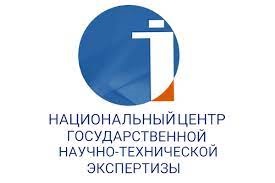Analysis of Common Transfer of Chinese Han Students’ Russian Pronunciation
https://doi.org/10.55491/2411-6076-2025-2-211-219
Abstract
With the increasing frequency of international communication, the study of second language acquisition has garnered heightened attention within the academic community. In the realm of second language acquisition, the phenomenon of language transfer is widespread and has emerged as a focal point in research on interlingual influence. This article examines language transfer during the acquisition of Russian oral speech by Han Chinese students. This analysis represents a research endeavor conducted as part of a dissertation focusing on “Language transfer in the process of Russian phonetic acquisition by Chinese students”. Drawing on the collective expertise in resolving interlingual challenges in linguistics, the comparative method serves as the primary approach for elucidating the theory of language transfer. Accordingly, the article adopts the theory of language transfer as a research framework, employing a bilingual contrastive analytical method to compare phonemes, syllables, and stress patterns between the native language of Han students and Russian, thereby analyzing common instances of positive and negative transfer. Through this analysis, the article delineates the concept and impact of language transfer, elucidating the underlying reasons for various forms of negative transfer from the Han native language into Russian pronunciation, along with phonetic errors observed in Chinese Han students during their acquisition of the Russian language, illustrated through examples. The objective of this analysis is to uncover the factors contributing to different types of transfer in the process of Russian phonetic acquisition by Han students and mitigate such errors, facilitating accurate and effective learning of Russian, comprehension of Russian phonetics, and the acquisition of proficient speaking skills.
About the Authors
Sh. LiChina
Shirui Li, Doctoral student
Almaty
M. Zhambylkyzy
Kazakhstan
Marina Zhambylkyzy, Doctor of Philosophy (PhD), Аssociate Professor
Almaty
References
1. Andersen, R. (1983) Transfer to Somewhere. In Gass, S., Selinker, L.(eds.), Language Transfer in Language Learning. Rowley, MA: Newbury House. P. 177-201. (in English)
2. Bi Ran, Chen, Hua (2013) Zhongguo yingyu xuexizhe yindiao moshi de zongshen yanjiu [An in-depth study of the pitch patterns of Chinese English learners]. Waiyu yu waiyujiaoxue.Vol. 1. P. 50-54. (In Chinese)
3. Broselow, E. (1984) An investigation of transfer in second language phonology. International Review of Applied Linguistics.Vol. 22. P. 253-269. (in English)
4. Broselow, E. (1988) Prosodic phonology and the acquisition of a second language. Linguistic theory in second language acquisition. P. 295-308. (in English)
5. Brown, C. (1998) The role of the Ll grammar in the acquisition of segmental structure. Second Language Research. Vol. 14. (in English)
6. Eckman, F., Iverson, G. K. (2013) The role of native language phonology in the production of L2 contrasts. Second Language Acquisition. P. 67-92. (in English)
7. Flege, J.E. (1987) The production of “new” and “similar” phones in a foreign language: Evidence for the effect of equivalence classification. Journal of Phonetics, Vol. 1. P. 47-65. (in English)
8. Goad, H., White, L. (2006) Ultimate attainment in interlanguage grammars: A prosodic approach. Second Language Research. P. 243-268. (in English)
9. Jarvis, S., Pavlenko, A. (2007) Crosslinguistic influence in language and cognition. New York. Routledge. (in English)
10. Keating, P. (1984) Phonetic and Phonemic Representation of Stop Consonant Voicing. Language, 60(2), P. 286-319. (in English)
11. Li, Fangfang (2020) Eryu yuyin xidezhong de qianyi yanjiu [Transfer research in second language phonetic acquisition]. Nankai yuyan xuekan. Vol. 1. (In Chinese)
12. Selinker, L. (1972) Interlanguage. International Review of Applied Linguistics, Vol. 10:3. P. 209-241. (in English)
13. Shi, feng, Wen, Baoying (2004) Zhong, ri xuesheng yuanyin fayin zhong de muyuqianyi xianxiang [Mother tongue transfer phenomenon in vowel pronunciation among Chinese and Japanese students]. Nankai yuyan xuekan, Vol. 2. P. 204-211. (In Chinese)
14. Shvedova, N. Ju. (gl. red.) (1980) Russkaja grammatika.Tom I. Moskva: Nauka. 784 s. [Shvedova N. Y. (Chief editor) (1980) Russian Grammar. Volume I. Moscow: Nauka. 784 p.] (In Russian)
15. Skripnik, Ja. N., Smolenskaja, T. M. (2010) Fonetika sovremennogo russkogo jazyka. Stavropol`. Izd-vo SGPI. 152 s. [Skripnik Ya. N., Smolenskaya T. M. (2010) Phonetics of the modern Russian language. Stavropol: SGPI. 152 p.] (In Russian)
16. Wang, Fang (2004) Zhangwo eyufayin [Russian pronunciation acquisition]. Beijing. Shijie tushu chuban gongsi, Vol. 12. (in Chinese)
17. Wayland, R.P., Guion, S.G. (2004) Training English and Chinese Listeners to Perceive Thai Tones: A Preliminary Report. Language Learning, 54(4). P. 681-712.
18. Xu, Laidi (2013) Zhongguoxuesheng eyuyuyinci fayinxíde changjian pianwu fenxi [Analysis of common errors in Chinese students’ pronunciation acquisition of Russian words]. Nanjing. Zhongguo eyu jiaoxue chubanshe, T. 32. No. 4. (in Chinese)
19. Zsiga, E.C. (2003) Articulatory timing in a second language: Evidence from English and Russian. London. Cambridge University Press, Studies in Second Language Acquisition. Vol. 25. No. 3. P. 399-432.
Review
For citations:
Li Sh., Zhambylkyzy M. Analysis of Common Transfer of Chinese Han Students’ Russian Pronunciation. Tiltanym. 2025;(2):211-219. (In Russ.) https://doi.org/10.55491/2411-6076-2025-2-211-219

















